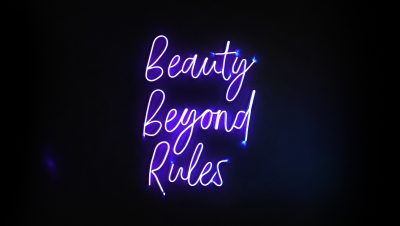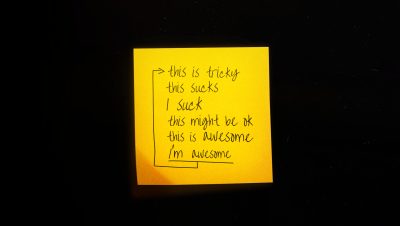Over the years, I collected this D.E.S.I.G.N. Cheat Sheet for a better collaboration with non-designers. An acronym that can be kept close during workshops, meetings, as a post-it near your webcam, or wherever…
As Head of Design at a health tech company and running a remote design agency years before that, I collaborated a lot with people from different fields. When it comes to collaborating between those departments there is naturally a gap in knowledge, experience, and vocabulary. This had mainly two side effects in the past: occasional frustration but also great output quality due to diverse perspectives. Over the years I gathered a hand full of handy tips, that help me attempt to bridge those gaps and make collaboration more effectively.
The D.E.S.I.G.N. Cheat Sheet
D – Distrust isn't real
Let me clarify. As designers, coordinators, and problem solvers, we ask countless questions – it’s how we dig deep into the core of any issue. However, when collaborating with new people, this analytical approach might inadvertently make them feel doubted or constantly challenged. While this mindset proves valuable and true especially beyond junior level, it can create an unpleasant experience for others, even if they are also analytical.
To resolve this efficiently, I suggest explaining our process upfront, just once. Yes, I do ask a lot of questions, but it’s merely to grasp the project better. I don’t intend to be difficult. So, let’s get started.
- Worth mentioning: Sometimes things just need to get done, especially when working within a company, not as an agency. Mostly true when the complexity is high and preparatory work has been thorough.
- Trying to be known for fixing deeper problems with a feeling of ease, not being the one that always digs up crap that no one asked for, felt worth aiming for.
- Still, be clear in communication, and be brave enough to call out meaningful issues if you spot them, avoiding the Bystander Effect or Diffusion of Responsibility.
E – Embrace strengths over weaknesses
This paragraph is not restricted to designers working with non-designers. However, in my experience, when individuals from different fields collaborate, their lack of ability in the other person’s field becomes apparent, especially for those who are more pessimistic and less solution-oriented. I always get more out of focusing on their expertise, knowledge, and strengths. Be patient and empathetic and for goodness sake – really listen. Collaboration is a two-way street, and it’s important to remember that everyone comes from a different background and perspective. Take the time to listen to others and understand their point of view, looking especially for blindspots in your perspective that get discovered by their input.
- A fun idea is to try giving your collaborator's strengths a title. It can change from meeting to meeting or even from topic to topic. Examples of titles are "Master of Time and Budget," "Live Analytics Data Yoda," or "Backend Code Lawn Mower"… you should keep those titles for yourself maybe.
S – Set realistic expectations
When collaborating with non-designers, it’s common to encounter diverse and sometimes inaccurate expectations regarding necessary project steps, duration, and effort required. In such situations, it’s crucial to be our own advocate and introduce our collaborators to the design process. Setting realistic expectations from the start builds trust and ensures alignment on the necessary steps to achieve our shared vision. However, I’ve found that maintaining a balance between providing essential information and not over-explaining can be pleasantly effective. I try to avoid unnecessary elaboration unless asked for, allowing them to focus on their expertise, enabling them to understand the estimation or progress on a project. Often, they come to realize that there’s more to it than they initially thought, and this clarity helps to dispel any misconceptions and align everyone for a smoother collaboration.
I – Input before output
Embrace the “Talking Last” approach to foster effective communication and decision-making. Instead of rushing to share your opinion or solution, invest time in actively listening to all perspectives. By withholding your initial thoughts, you create an open space for others to express their ideas freely. This practice enables you to gather a comprehensive understanding of the situation and consider all viewpoints before forming your own opinion. Embracing the power of collective information empowers you to make more informed and inclusive decisions that can lead to better outcomes for everyone involved.
G – Get rid of jargon
Designers often use specialized terminology that may be unfamiliar to others. To ensure effective communication, we must avoid overwhelming our collaborators with jargon. Instead, let’s use simple and relatable language to explain design concepts and ideas.
One way to approach this is by explaining design concepts from high-level to low-level, using analogies or real-life examples to help illustrate our point. Accompanying this way of talking with visuals is a great strategy to further clarify topics and steps that collaborators might be unfamiliar with. Sketch and Show! Visuals are our design sidekicks. Sketches, wireframes, and mood boards or screenshots of examples speak louder than words.
Furthermore, it’s essential to ask questions and actively listen to our collaborators. Paying close attention to how they paraphrase what they understood ensures that they are on the same page with what we’re trying to convey. This active engagement creates a collaborative environment where everyone feels comfortable sharing ideas, leading to more successful and fruitful collaborations.
- Use simple language and stay away from design terms
- Explain from high-level to low-level
- Use analogies and real-life examples
- Visualize what you are talking about
- Pay attention to signs of misunderstanding
N – Nurture a collaborative mindset
The journey of better collaboration doesn’t end here. Nurture a collaborative mindset by continuously seeking ways to improve teamwork, communication, and understanding between designers and non-designers. Embrace diversity of thought and be open to learning from each other. Be patient and empathetic, recognizing that everyone brings valuable insights to the table. Encourage regular check-ins to address concerns, celebrate achievements, and foster a positive and productive atmosphere. No cheat-sheet with some tips will help your individual situation. So maybe setup your own, write and rewrite things that work and perhaps you share them as well.
- Nurture a collaborative mindeset yourself, write it down, share it if you like.
Conclusion
D – Distrust isn’t real
Asking a lot of questions is great, state your intentions, upfront, once.
E – Embrace strengths over weaknesses
The fact that your collaborators have expertise in different fields is pure gold.
S – Set realistic expectations
Improve the first thing a lack of understanding comes with and advocate but don’t over explain.
I – Input before output
Embrace the “Talking Last” approach
G – Get rid of jargon
Talk simple, make use of visuals, detect signs of misunderstanding.
N – Nurture a collaborative mindset
The journey of better collaboration doesn’t end here. Take notes, learn, reflect, and share.




